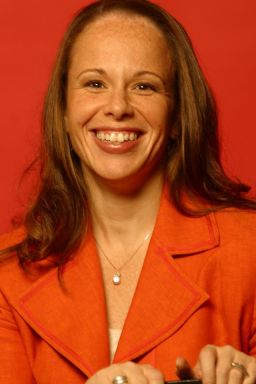Editor’s Note: Tanya M. Odom, an education consultant, works with corporations, schools, NGOs and local communities as a leadership coach on civil and human rights, global diversity and inclusion. The opinions expressed in this commentary are hers.
Story highlights
Tanya M. Odom: Justin Trudeau is right -- diversity should be clearly apparent in business as well as government
She says too many conferences still don't get the need to make diversity a goal
Justin Trudeau, Canada’s new Prime Minister, has made news for intentionally valuing diversity in the selection of his Cabinet. The historic Cabinet has an equal gender balance, and is ethnically diverse.
When asked to explain his gender parity promise, Trudeau replied, “Because it’s 2015.”
A simple and yet important answer that resonates with many of us committed to diversity and inclusion.

In parts of the U.N. system, senior leaders are taking a “parity pledge” to make a commitment not to speak on all-male panels. Aparna Mehrotra, a senior adviser at U.N. Women (with which I work) supports the pledge, and advocates for increased change. She told me, “Parity is more than a pledge. It is about representation in proportion to population, it is about inclusion, it is about diversity, it is about harnessing the potential of all, it is about a better more effective outcome. It is about an imperative, the time for which has come.”
“Parity pledges,” and “inclusion pledges” can encourage us all to be mindful of who is sitting at the table, sitting in the meeting room, or speaking on the stage.
And yet not all is encouraging about the acceptance of diversity today.
We are in the height of the fall conference season: leadership conferences, coaching conferences, mindfulness conferences, women’s empowerment conferences, tech conferences, and HR conferences abound.
And it is disappointing and frustrating to see the continued lack of diversity and of intentional inclusion of women and people of color. Both in-person and online conferences continue to coordinate and showcase events that lack gender and racial and cultural diversity.
Two of the recent conferences that have troubled me the most have been ones focused on talent and human resources. Both conferences branded themselves as “the largest” or “the best” in their category of events.
The online HR Conference listed over 60 speakers and authors, with fewer than five appearing to be people of color.
No, it is not only about “counting heads.” However representation is one indication of diversity.
In 2015, how can we talk about “talent” or “HR,” without including conversations about diversity and inclusion, and including diverse voices? Do the organizers notice the lack of diversity? Is diversity an afterthought?
My response (via social media) to the organizers has been respectful, and yet intentionally challenging. My strategy has been that of sharing research links (highlighting the importance of diversity, the connection between diversity and innovation, the “diversity dividend,” etc.) and to provide suggestions of diverse individuals who might be good resources for them.
A troubling response from one large conference supporter in the HR field stated that, “It’s very hard to get diverse speakers.” This response was as troubling as the lack of racial/cultural diversity in itself.
If you want to create a conference or event that is diverse, it takes making that a goal and following through – making sure that diversity is, as Candi Castleberry Singleton of the Dignity and Respect Campaign describes, “built in, not bolted on.”
The strong response to this comment on social media is a testament to the power of diverse networks. There were tweets and posts that challenged the excuse that it was “hard to get diverse speakers.”
A friend brought up the discussion in his morning carpool ride with ninth graders. Their response to the statement about it being difficult to find diverse speakers? “Well, that means they’re not looking.”
Cindy Gallop an entrepreneur, consultant, Ted Talk speaker and advocate for equal and fair representation of women, particularly in the advertising/creative world, responded by saying, “Anyone who says ‘diversity is hard,’ ask them to say aloud, ‘I want a homogeneous company/event.’ ”
Dr. Robert Jones, CEO of the Public Religion Research Institute, has done research focusing on the lack of diversity in many of our social networks, which can limit our ability to be aware of different perspectives, associations, and ways of living and working in the world.
Joe Gerstandt, a diversity and inclusion consultant, writer and thought leader is working on including language about diversity in his speaking/consulting contracts. “We can do better, and if we are intentional about it, we will do better. … There is really no excuse today for not having diversity and inclusion topics on the agenda, and diversity of speakers, and not just among the speakers talking about diversity and inclusion topics. It is easier than ever before to find a diverse slate of talented speakers, but even easier than that is finding people happy to help.”
How do we ensure that diversity and inclusion will not continue to be ignored? By pointing out the lack of diversity when it exists. By challenging presenters and speakers to notice if there are diverse speakers and presenters on panels, and by acknowledging that we still have a tremendous amount of work to do in creating workplaces, conferences, events and discussions that truly value the changing world in which we live.
As civil rights pioneer, professor, activist and author Mel King says, “The broom is in our hands.”
Join us on Facebook.com/CNNOpinion.
Read CNNOpinion’s Flipboard magazine.
